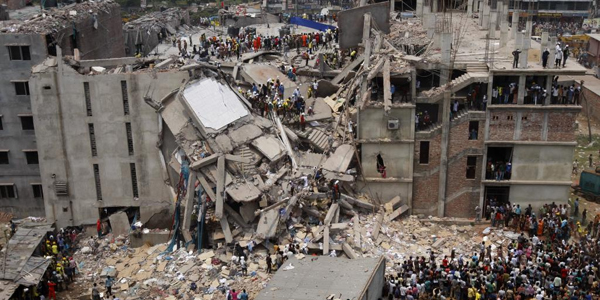
Three years into the infamous Rana Plaza building collapse that claimed more than 1,000 lives and injured 2,500, a recent survey report of ActionAid Bangladesh has claimed that almost half of the survivors are still unemployed, while 58.4 per cent of them are still traumatised.
Also Read – Bangladesh Court orders mass arrests over Rana Plaza disaster
The report, titled ‘Rana Plaza Driving RMG Sector: Critical Reflections of Survivors’, released recently, stated that although unemployment among the Rana Plaza survivors has decreased in the past three years, majority of the currently employed survivors are self-employed, with only 21.4 per cent of them getting jobs at the readymade garment (RMG) factories, while 23.2 per cent are running small business, and 16.8 per cent are working as tailors.
The report further underlined that 58.4 per cent of the respondents were still suffering from long-term psycho-social difficulties.
Also Read – 73 Garment Factories Shut; Over 20,000 Workers Affected Post-Rana Plaza Incident, Says Syed Ahmed
ActionAid Bangladesh Country Director Farah Kabir, Human rights activist Hameeda Hossain, Department of Inspection For Factories and Establishments Inspector General Syed Ahmed, International Labour Organization Program Manager Tumo Puirtaine, and Alliance for Bangladesh Worker Safety Managing Director M Rabin, among others, attended the session.
Rana Plaza building collapse, which occurred on April 24, 2013 in Dhaka, is considered to be the deadliest garment-factory accident in history, as well as the deadliest structural failure in modern human history. The building reportedly housed clothing factories, a bank, apartments, and several shops. The shops and the bank on the lower floors were closed down soon after cracks were discovered in the building. However, the building’s owners reportedly ignored warnings to avoid using the building after cracks started appearing the day before. Garment workers were ordered to return the following day, and the building collapsed during the morning rush-hour.






